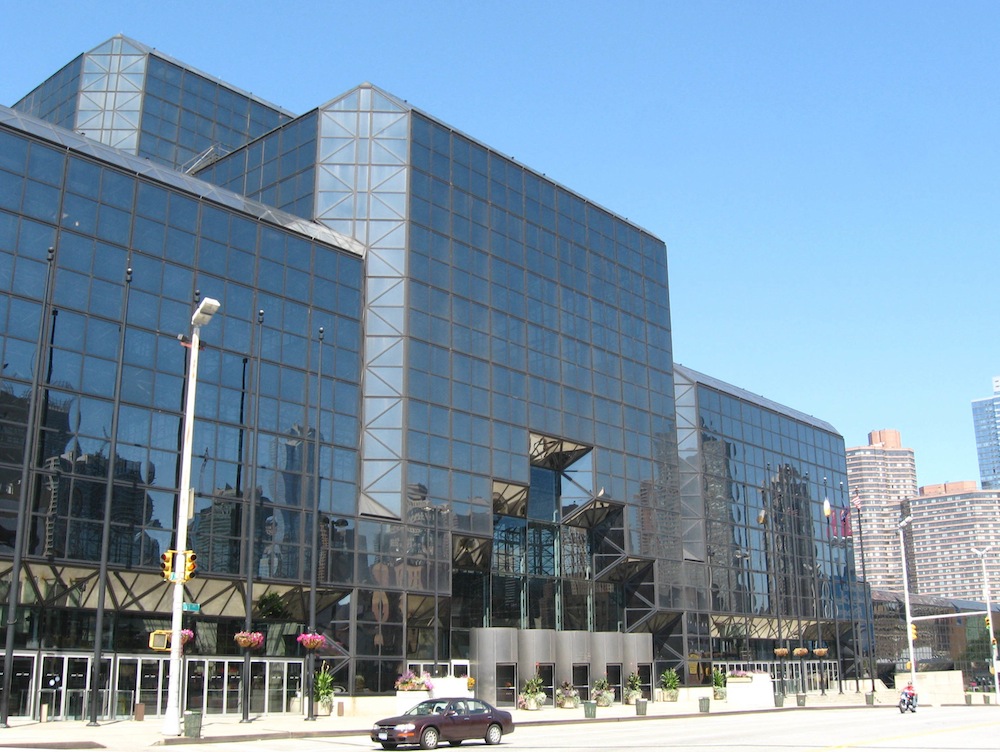The last recession isn’t over yet, at least as far as the glass products are concerned.
Glass manufacturers, which shut 11 of 47 float-glass North American plants between 2007 and 2014, are now playing catch-up with demand from commercial builders whose business is robust. The Wall Street Journal reports that glass prices have risen by more than 30% over the past 18 months. Construction projects are being delayed because they can’t get the glass they need, especially for curtain wall, the metal-framed glass panels that have become popular design components for skyscrapers, airport terminals, hotels, and many other nonresidential buildings.
“The glass guys are dictating the timetables of a project to us,” Ralph Esposito, who oversees Lend Lease’s commercial construction in New York, tells the Journal. AvalonBay Communities have seen glass prices rise by 35% to 45% from 2013, and expects this supply-and-demand dilemma to persist through early 2016, says Scott Kinter, its Senior Vice President in Boston.
The Producer Price Index for the broad category “flat glass” in July 2015 stood at 126.6, up 5% from July 2014. The Bureau of Labor Statistics does not adjust this category for seasonality.
Shortages have become so severe that The Related Cos., one of the country’s biggest developers, recently joined forces with M. Cohen & Sons, a specialty metal manufacturer, to open its own glass factory, called New Hudson Façades, in Linwood, Pa. The Journal quotes Bruce Beal, Related’s president, as stating that his firm needs more than 3,000 glass panels for one skyscraper it’s building on Manhattan’s West Side alone.
Demand and price increases for glass aren’t confined to North America, either. Saint-Gobain, one of the world’s leading glass producers, reported a 9.8% increase in flat glass sales, to 2.633 billion Euros (US$2.9 billion), for the first half of 2015, during which the company’s operating income for that category rose 48.1% to 194 million Euros.
Perhaps ironically, last April the Journal also reported how several cities across the country were pulling back on their glass-recycling programs because glass had become too difficult and expensive to handle.
Related Stories
| Nov 3, 2010
Sailing center sets course for energy efficiency, sustainability
The Milwaukee (Wis.) Community Sailing Center’s new facility on Lake Michigan counts a geothermal heating and cooling system among its sustainable features. The facility was designed for the nonprofit instructional sailing organization with energy efficiency and low operating costs in mind.
| Nov 3, 2010
Rotating atriums give Riyadh’s first Hilton an unusual twist
Goettsch Partners, in collaboration with Omrania & Associates (architect of record) and David Wrenn Interiors (interior designer), is serving as design architect for the five-star, 900-key Hilton Riyadh.
| Nov 3, 2010
Virginia biofuel research center moving along
The Sustainable Energy Technology Center has broken ground in October on the Danville, Va., campus of the Institute for Advanced Learning and Research. The 25,000-sf facility will be used to develop enhanced bio-based fuels, and will house research laboratories, support labs, graduate student research space, and faculty offices. Rainwater harvesting, a vegetated roof, low-VOC and recycled materials, photovoltaic panels, high-efficiency plumbing fixtures and water-saving systems, and LED light fixtures will be deployed. Dewberry served as lead architect, with Lord Aeck & Sargent serving as laboratory designer and sustainability consultant. Perigon Engineering consulted on high-bay process labs. New Atlantic Contracting is building the facility.
| Nov 2, 2010
Cypress Siding Helps Nature Center Look its Part
The Trinity River Audubon Center, which sits within a 6,000-acre forest just outside Dallas, utilizes sustainable materials that help the $12.5 million nature center fit its wooded setting and put it on a path to earning LEED Gold.
| Oct 13, 2010
Prefab Trailblazer
The $137 million, 12-story, 500,000-sf Miami Valley Hospital cardiac center, Dayton, Ohio, is the first major hospital project in the U.S. to have made extensive use of prefabricated components in its design and construction.
| Oct 13, 2010
Hospital tower gets modern makeover
The Wellmont Holston Valley Medical Center in Kingsport, Tenn., expanded its D unit, a project that includes a 243,443-sf addition with a 12-room operating suite, a 36-bed intensive care unit, and an enlarged emergency department.
| Oct 13, 2010
Modern office design accentuates skyline views
Intercontinental|Exchange, a Chicago-based financial firm, hired design/engineering firm Epstein to create a modern, new 31st-floor headquarters.
| Oct 13, 2010
HQ renovations aim for modern look
Gerner Kronick + Valcarcel Architects’ renovations to the Commonwealth Bank of Australia’s New York City headquarters will feature a reworked reception lobby with back-painted glass, silk-screened logos, and a video wall.
| Oct 13, 2010
New health center to focus on education and awareness
Construction is getting pumped up at the new Anschutz Health and Wellness Center at the University of Colorado, Denver. The four-story, 94,000-sf building will focus on healthy lifestyles and disease prevention.
| Oct 13, 2010
Community center under way in NYC seeks LEED Platinum
A curving, 550-foot-long glass arcade dubbed the “Wall of Light” is the standout architectural and sustainable feature of the Battery Park City Community Center, a 60,000-sf complex located in a two-tower residential Lower Manhattan complex. Hanrahan Meyers Architects designed the glass arcade to act as a passive energy system, bringing natural light into all interior spaces.

















